With the summer in full effect, the heat is on. It means we see an increase in fruits and vegetables that have our back. July is all about reaping the benefits of all that spring rainfall and the hard work of all those pollinators. All the water from the last season the fruits and vegetables are full of hydration. Not only do we see high water content in our summer foods but also sun protection! Summer fruits and vegetables are chock-full of foods to help replenish our electrolytes and provide us with lightweight energy. Most, if not all of us, are looking for foods that help us beat the heat and boost our energy. What better way to do just that than to fill your plate with powerful fruits and vegetables designed to burn fat and even slow down aging. Just like that, summer has even more of a reason to be our favorite season.
Let’s face it, we all want to look and feel our best. One of the best ways to do just that is by providing our bodies with the building blocks they need. During the month of July, mother nature fills our cupboards with fruits and vegetables that help bring out the best in all of us. Summer fruits and vegetables are full of vitamins and minerals that support immunity, slow aging, boost metabolic rate, improve skin and hair health, support your heart health, and more! The following is a list of the best vegetables in July along with their health benefits.
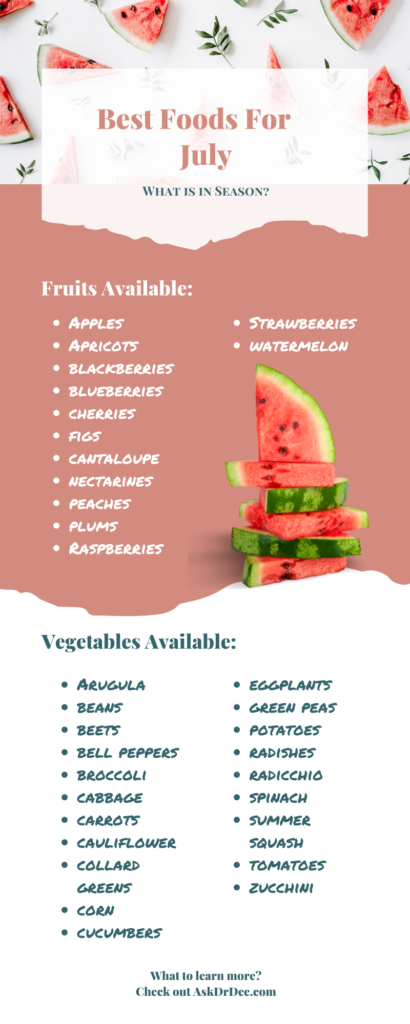
Crazy Cauliflower
Cauliflower is a cruciferous vegetable that is naturally high in fiber and B-vitamins. It provides antioxidants and phytonutrients that can protect against cancer. It also contains fiber to enhance weight loss and digestion, choline which is essential for learning and memory, and many other important nutrients.
Cauliflower is a potentially rich source of vitamin C, folate, vitamin K, B complex vitamins, and vitamin E. It provides vital minerals such as calcium, magnesium, phosphorus, potassium, zinc, sodium, and iron without adding any harmful cholesterol. It contains some protein. It can also provide dietary fiber and may contain smaller amounts of natural sugars as compared to the other members of its botanical relatives, such as broccoli.
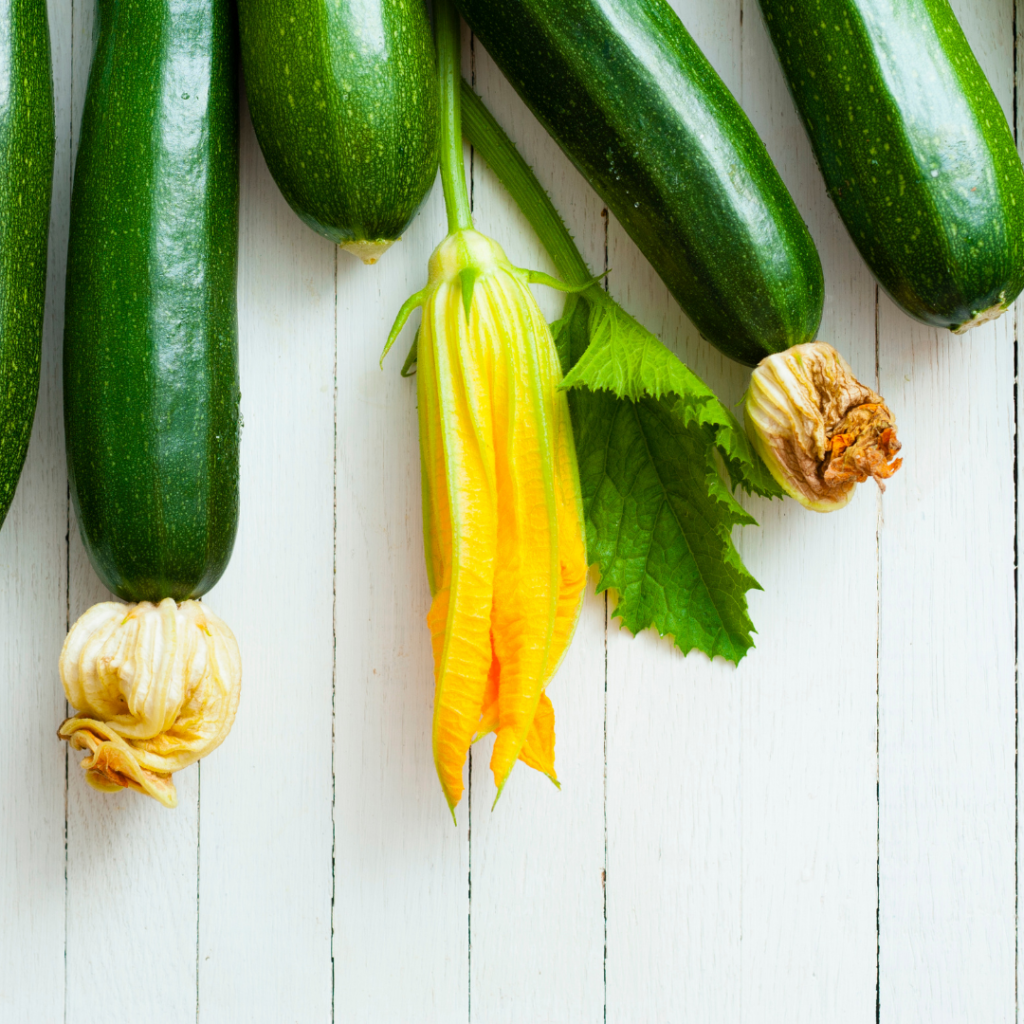
Get in the Zone Zucchini
Zucchini contains a variety of vitamins, minerals, and beneficial plant compounds. Cooked zucchini is particularly high in vitamin A, though raw zucchini contains slightly less. Zucchini boasts several antioxidants that may provide various health benefits. The highest levels are found in the fruit’s skin. Zucchini is rich in water and fiber, two compounds that can promote healthy digestion by reducing your risk of constipation and symptoms of various gut disorders. Zucchini’s fiber may increase insulin sensitivity and stabilize blood sugar levels, potentially reducing your risk of type 2 diabetes. The fiber, potassium, and carotenoids in zucchini may lower blood pressure, cholesterol, and other risk factors for heart disease. Zucchini is rich in manganese, lutein, zeaxanthin, and vitamins A and C — nutrients that contribute to healthy vision and may lower your risk of age-related eye conditions.
Zucchini is rich in water and fiber yet low in calories, all of which may help reduce hunger and help you feel full — potentially leading to weight loss over time. Zucchini may benefit bone, thyroid, and prostate health. It may also have anti-cancer properties. However, more research is needed before strong conclusions can be made. Zucchini can be eaten raw or cooked in soups, stews, sandwiches, salads, baked goods, and more.
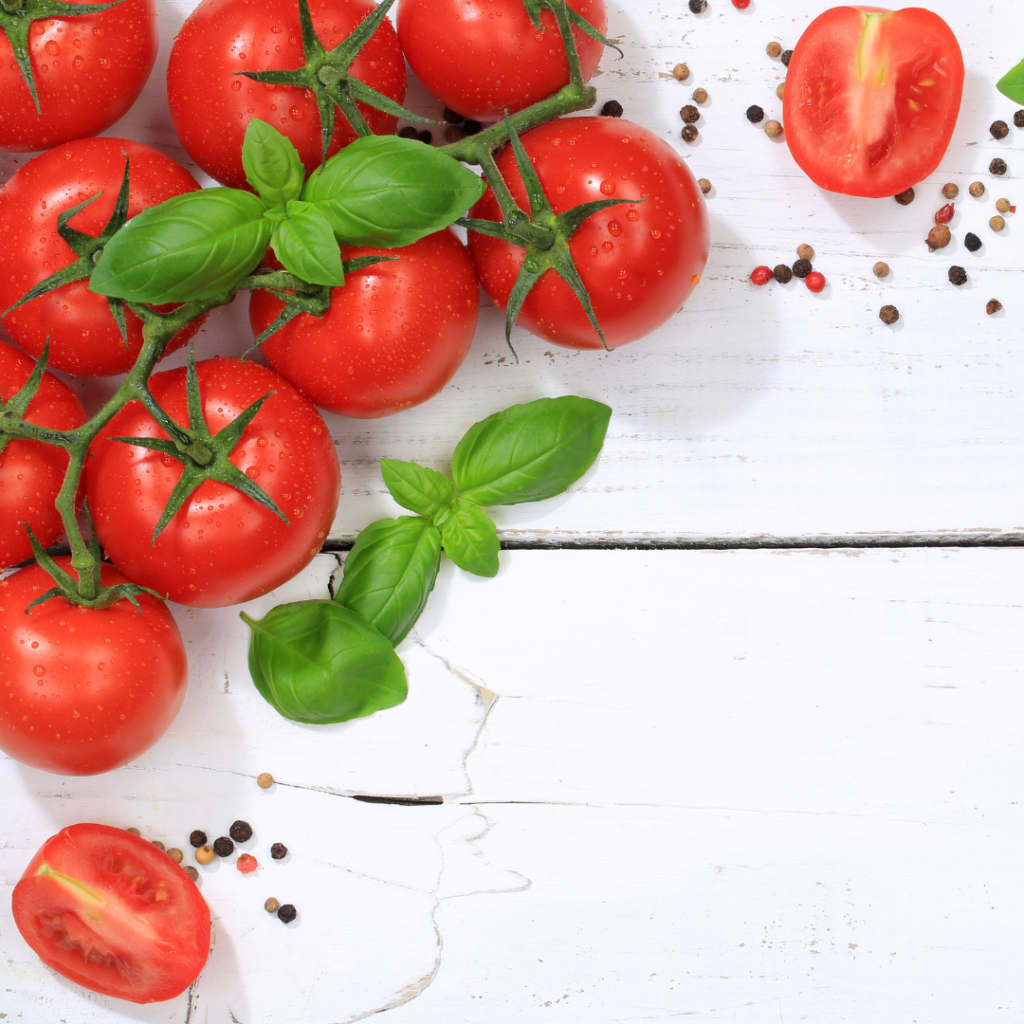
Terrific Tomatoes
A single tomato can provide about 40% of the daily recommended minimum of vitamin C. What’s more, tomatoes supply vitamin A, which supports immunity, vision, and skin health, and vitamin K, which is good for your bones. Tomatoes also provide potassium, a key nutrient for heart function, muscle contractions, and maintaining healthy blood pressure and fluid balance. They contain an antioxidant called lycopene (which also gives them their red color). Studies have shown that higher blood levels of lycopene are linked to lower death rates among people with metabolic syndrome. Lycopene is good for your eyes, too. And that’s not the only peeper-protective nutrient in tomatoes; they contain lutein and beta carotene as well. These nutrients support the vision and protect against eye conditions such as cataracts and macular degeneration. The fluid and fiber in tomatoes may be helpful if you’re prone to constipation.
Tomatoes may be a protective food for people with type 2 diabetes. In one study, people with diabetes who were supplemented with cooked tomatoes for 30 days experienced a decrease in lipid peroxidation. The combination of tomato paste and olive oil protects against sun damage and boosts the production of pro-collagen, a molecule that gives the skin its structure and keeps it firm. Observational studies have found links between consumption of tomato’s superstar compound, lycopene, and fewer incidences of prostate, ovarian, lung, and stomach cancers.
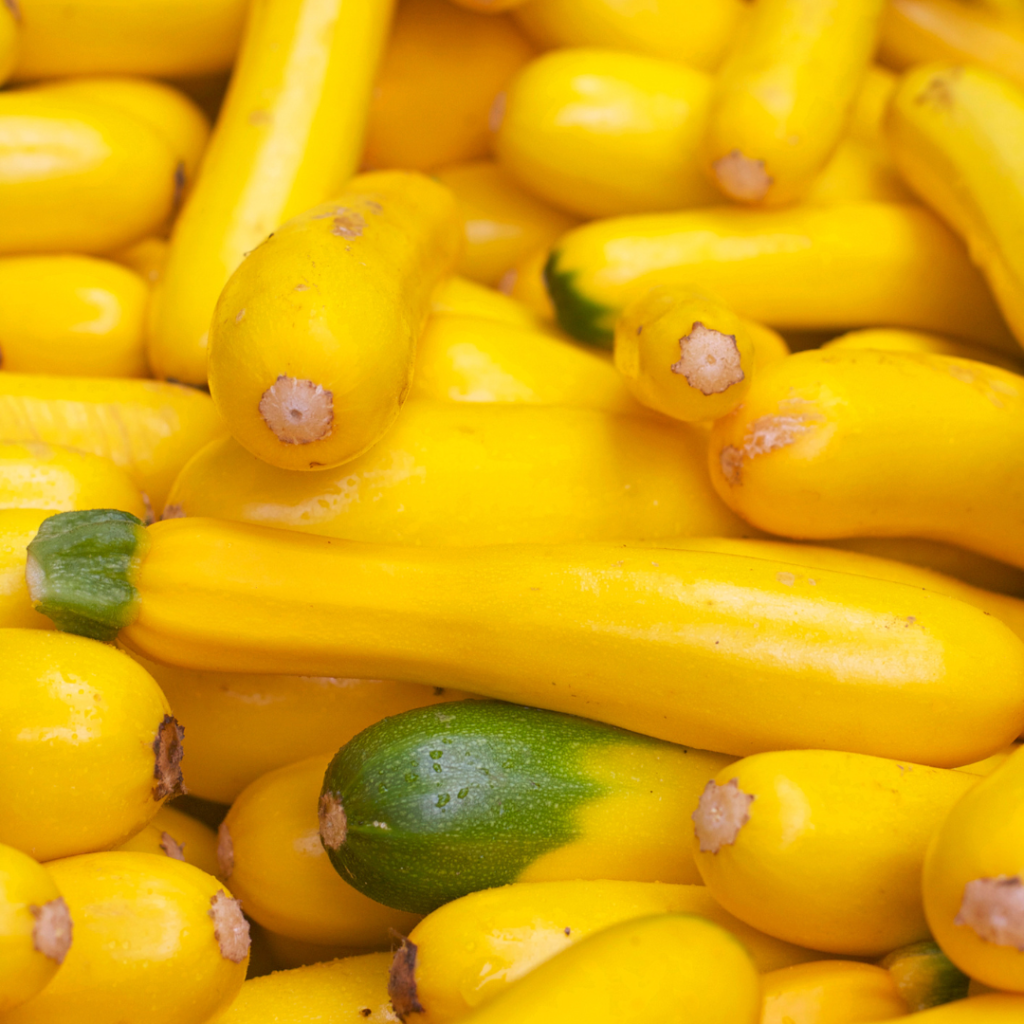
Super Summer Squash
Although there are up to 10 kinds of summer squash, only about eight are (more) commonly available. In addition to yellow squash, zucchini, costata romanesco zucchini, and eight-ball zucchini, as well as tatuma, pattypan, cousa, and zephyr squash are all summer squash family members you should consider inviting to your next reunion. Full of vitamins A, B, and C, plus fiber, magnesium, potassium, iron, and folate, this is one summer vegetable you’ll want to stop passing over. According to the USDA nutrient database, one medium yellow squash contains 39 calories, 2 grams of protein, zero grams of fat, 8 carbs, 4 grams of fiber, and 4 grams of sugar. In addition, you’ll find ample amounts of calcium, iron, and vitamins C, A, and B, as well as beta-carotene and lutein.
Yellow squash is low-calorie, so you can eat a lot of it and still meet your calorie requirements for the day. It’s also a great vegetable to mix in or add to pasta and other calorie-dense foods to fill you up while helping you slim down. A primary source of vitamin A, beta-carotene is also what gives yellow squash its vibrant hue. It’s also a carotenoid that acts as an antioxidant that protects the body from free radicals, can slow cognitive decline, and can keep your immune system, tissues, mucous membranes, hair, and skin healthy. Every medium yellow squash provides four grams of fiber. You can eat squash to help lower your cholesterol as well, as studies have shown that a plant-based diet can lower your total cholesterol.
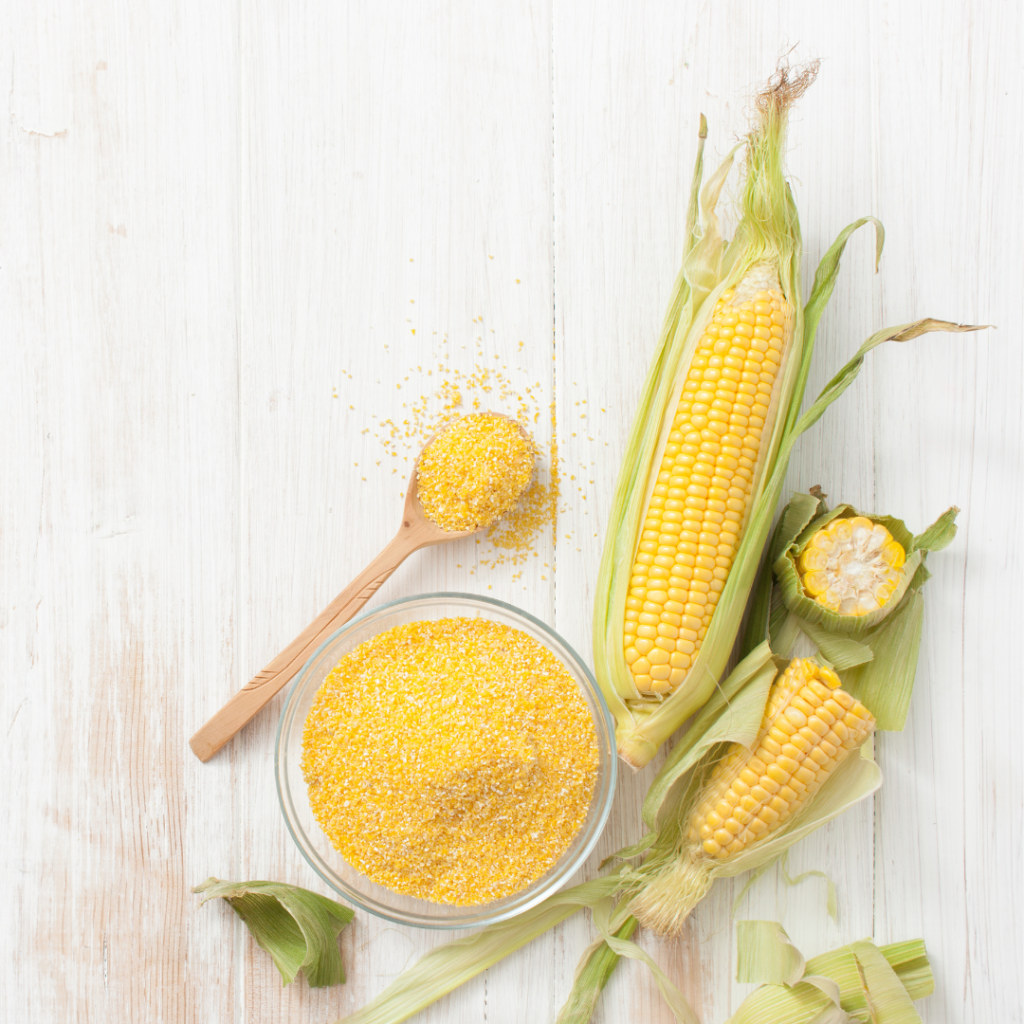
Caring Corn
Whole-grain corn is as healthy as any cereal grain, as it’s rich in fiber and many vitamins, minerals, and antioxidants. Corn is typically yellow but comes in a variety of other colors, such as red, orange, purple, blue, white, and black. Sweet corn, or sugar corn, is a special, low-starch variety with higher sugar content, at 18% of the dry weight. Despite the sugar in sweet corn, it is not a high-glycemic food, ranking low or medium on the glycemic index (GI). The GI is a measure of how quickly carbs are digested. Foods that rank high on this index may cause an unhealthy spike in blood sugar.
Corn is mainly composed of carbs and is fairly high in fiber. It also packs a decent amount of low-quality protein. Corn is a good source of many vitamins and minerals. Popcorn tends to be higher in minerals, while sweet corn tends to be higher in vitamins. Corn provides higher amounts of antioxidants than many other cereal grains. It’s especially rich in eye-healthy carotenoids. As a good source of lutein and zeaxanthin, corn may help maintain your eye health. What’s more, it doesn’t promote diverticular disease, as previously thought. On the contrary, it seems to be protective. Corn contains phytic acid, which may reduce mineral absorption. Mycotoxin contamination may also be a concern in developing countries. Finally, corn’s soluble fiber (FODMAPs) may cause symptoms in some people.
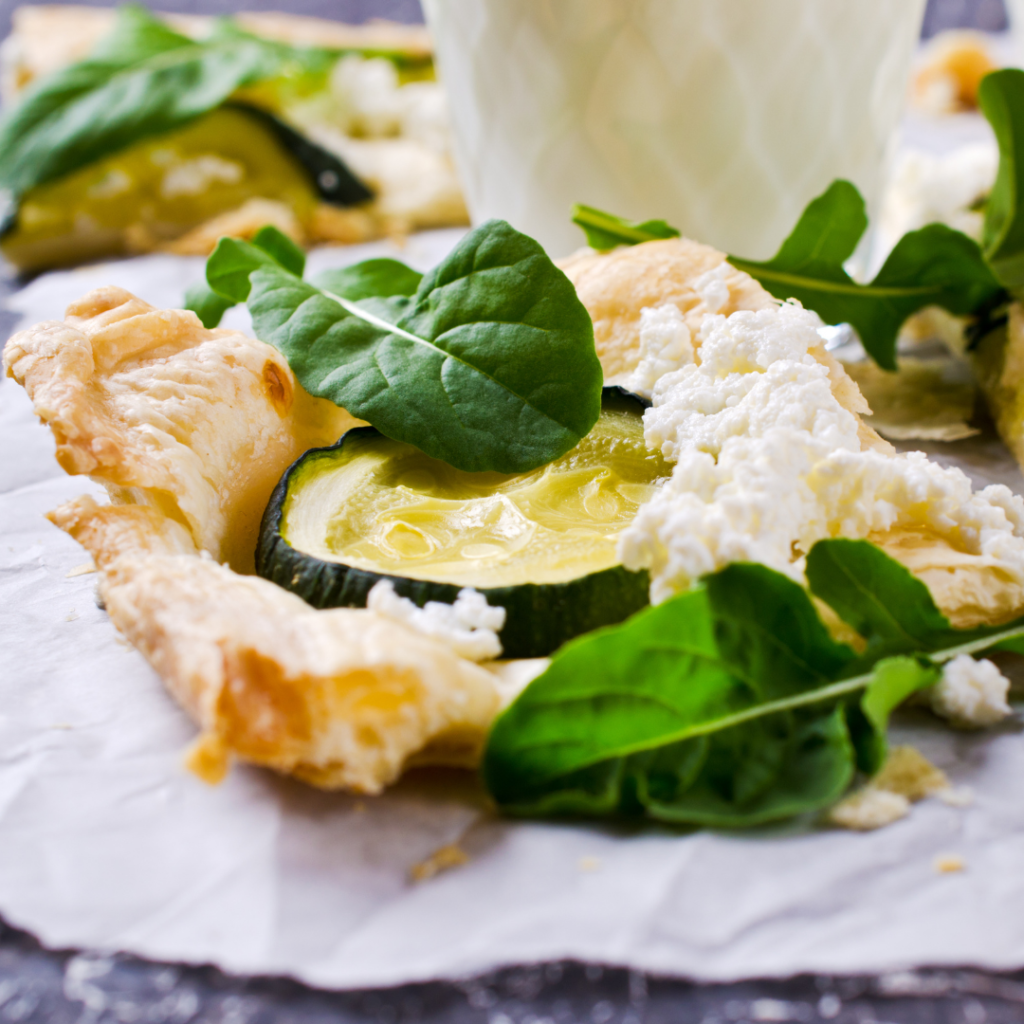
Zucchini Puffs
Gluten-Free, Dairy-Free, Serves 24
- 3/4 cup Buckwheat Flour
- 2 tsp Italian Seasoning
- 3/4 Coconut Milk
- 1 egg
- 3/4 tsp Baking Powder
- 1 cup Grated Zucchini
- 1/2 cup shredded vegan cheddar cheese
- salt and pepper to taste
Directions:
Add salt to the grated zucchini and drain excess water from the zucchini. In a large bowl, combine the flour, powder, and seasoning. Into a small bowl, combine the milk and egg. Then add the egg mixture to the dry ingredients and mix well. Add the shredded zucchini and cheese to the batter and spoon them into a muffin pan. Bake in a preheated 375-degree oven for 20 minutes or until the center is done.
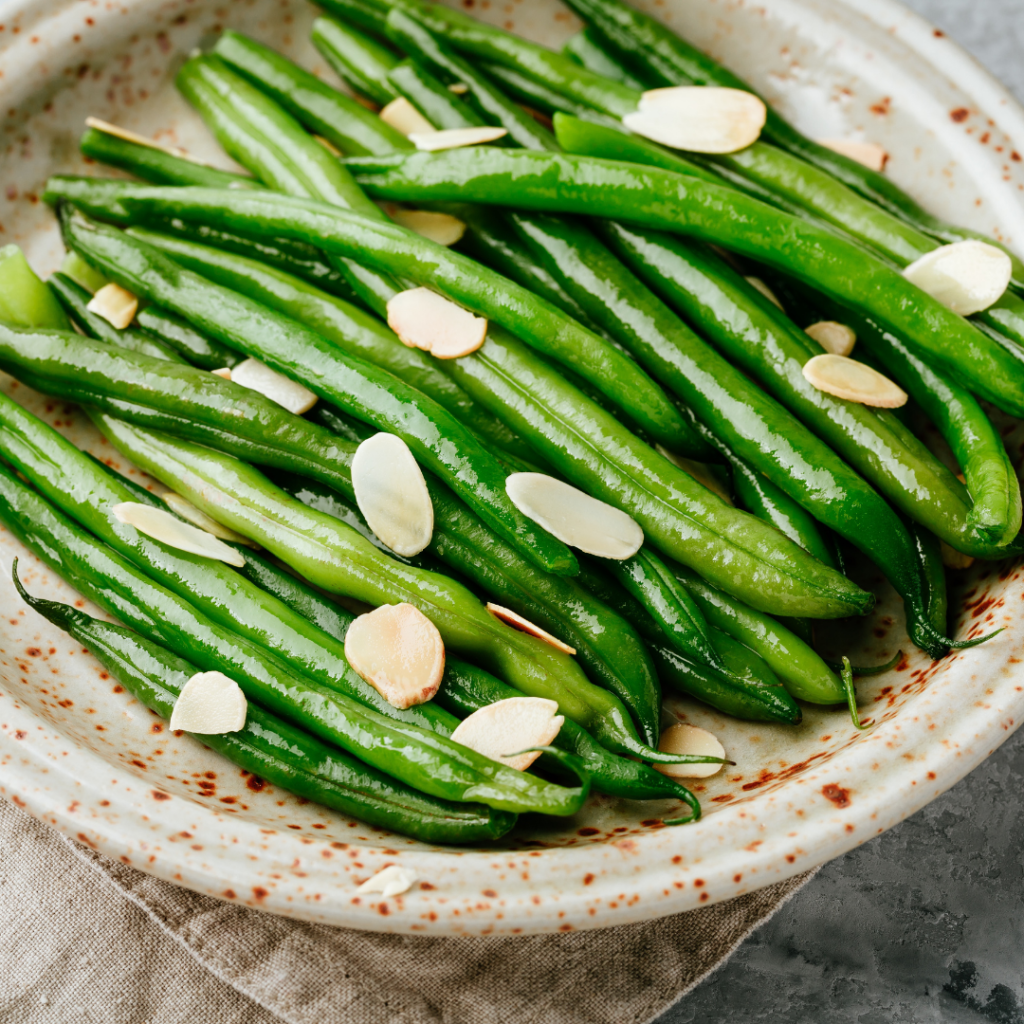
Green Beans Almondine
Gluten-Free, Vegan, Serves 4
- 1 pound French Green Beans trimmed
- 2 Tbsp Vegan Butter
- 1/4 cup Raw Sliced Almonds
- 2 medium Shallots diced
- zest and juice of 1 lemon
- 2 cloves garlic minced
- salt and pepper to taste
- 1 cup vegan parmesan
Directions:
Blanch the green beans for 4-5 minutes (boil then place directly into ice water to shock beans). Meanwhile, in a large skillet, melt butter and saute almonds for 2-3 minutes or until golden. Reduce the heat to low and add the shallots and garlic. Saute for an additional 1-2 minutes stirring frequently. Transfer the green beans into the skillet and saute until tender. Add in the juice and zest seasoning to taste. Top with vegan parmesan and serve hot.
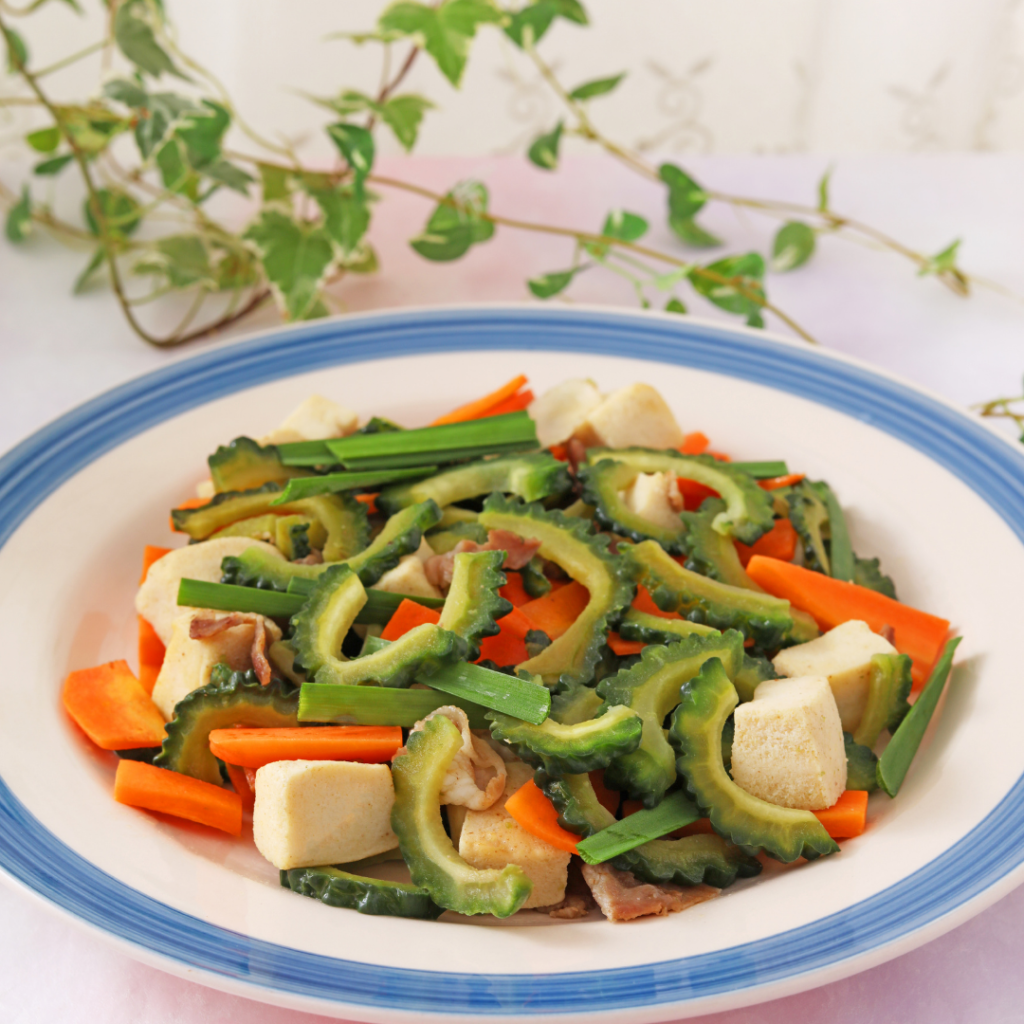
Bitter Melon Stir Fry
Gluten-Free, Vegan, Serves 4
- 1 pound bitter melon sliced
- 1/2 tsp chili pepper flakes
- 1 Tbsp minced garlic
- 2 Tbsp Sesame Oil
- 1 Tbsp Rice Wine Vinegar
- 2 Tbsp Coconut Amino
- 1/2 tsp Coconut Sugar
- 2 medium Carrots cubed
- 1 Shallot minced
- 1/2 red cabbage shredded
- 1 broccoli stalk cubed
- 2 cloves garlic minced
Directions:
Into a large skillet heat oil, garlic, and shallots. Once fragrant, saute carrots, melon, and broccoli stalk. Add in seasonings and saute for 3-5 minutes or until tender. Lastly, add cabbage and cook for another 1-2 minutes. Serve over rice.

Korean Cauliflower Lettuce Wraps
Gluten-Free, Vegan, Serves 6
- 1 large cauliflower cut into florets
- 2 Tbsp olive oil
- butter lettuce cups
- 1/2 cup chopped cashews
- Green Onions chopped
Sauce:
- 1/2 cup coconut amino
- 1 Tbsp rice vinegar
- 1/4 cup coconut sugar
- 1 Tbsp gochujang
- 2 cloves garlic minced
- 1 inch fresh ginger minced
- 1/2 Tbsp cornstarch
- 1 Tbsp sesame oil
Directions:
Preheat the oven to 450 degrees F. Toss the cauliflower in oil, salt, and pepper to taste. Roast for 30 minutes. Meanwhile, put together all the ingredients for the sauce into a blender. Mix until smooth and transfer into a sauce pot to reduce. Pour the sauce directly over the cauliflower and toss gently to combine. Arrange the wraps based on personal preference and top with nuts, green onions, and additional shredded vegetables.
Get Started Today
Keeping your body free of toxins and free radicals is necessary to maintain a healthy life and a healthy mind. There are tons of foods you can add to your regular diet to help your body with its critical detoxifying processes. If you are looking for a safe and all-natural way to detox your body at home be sure to check out my Balancing Abundance Program. Because detoxing is so important and realistically everyone should be doing it on at least a seasonal basis I have taken the time to put together a program to help you do just that. Here’s the thing, I know working with me one-on-one can seem difficult to get into (due to limited space) and I wanted to be able to give everyone an additional solution that has no limits. You deserve to be happy, healthy, and successful at everything you do so here are some recipes to help set you up for success!

Need A Hand?
A happy and healthy life is closer than you may think. We all have to deal with our health daily, and when we don’t feel our best, it shows. If you are tired of just making it through your day, you NEED to start investing in your health today! You are not alone on this journey. If you ever need any help, I am always here to do just that. Even if it is something as small as acting as a sounding board, do you have any questions or concerns I can help you with? Feel free to contact me directly at [email protected], or you can even book a one-on-one call with me. Be sure to subscribe to gain access to tons of free goodies and check back daily for more great recipes and information!

